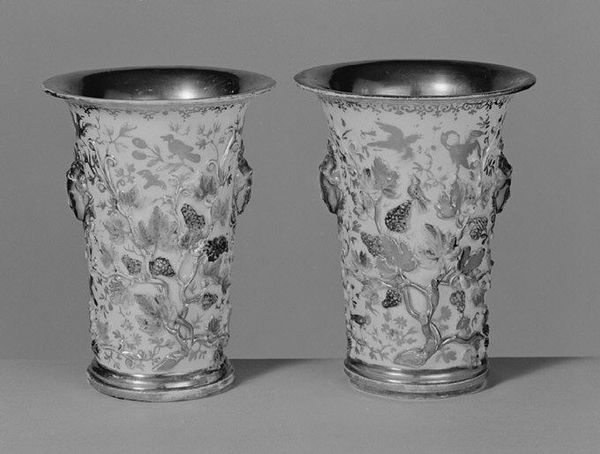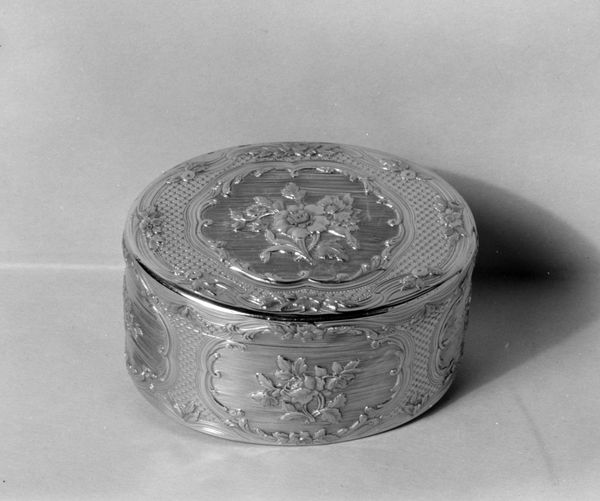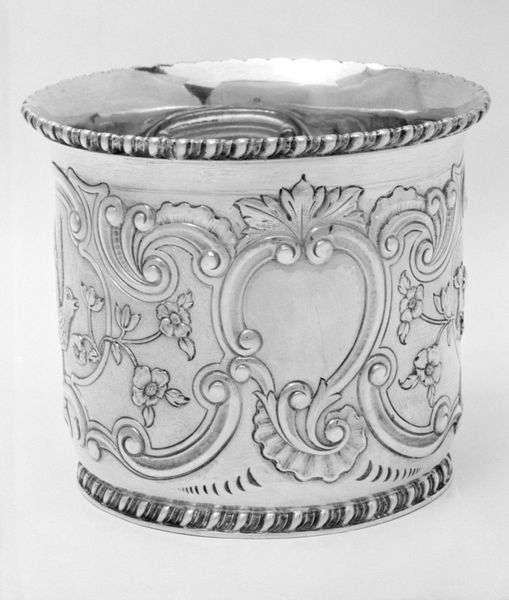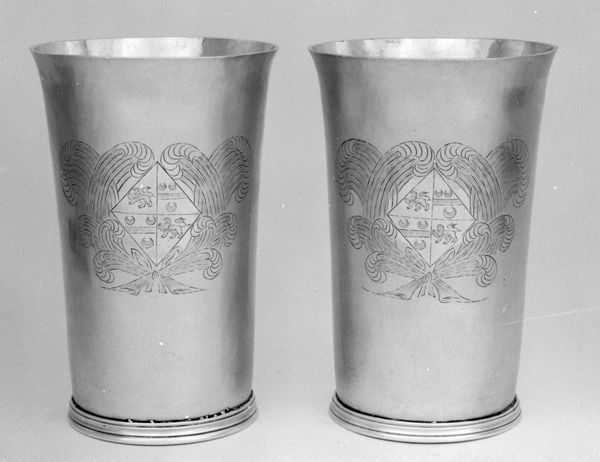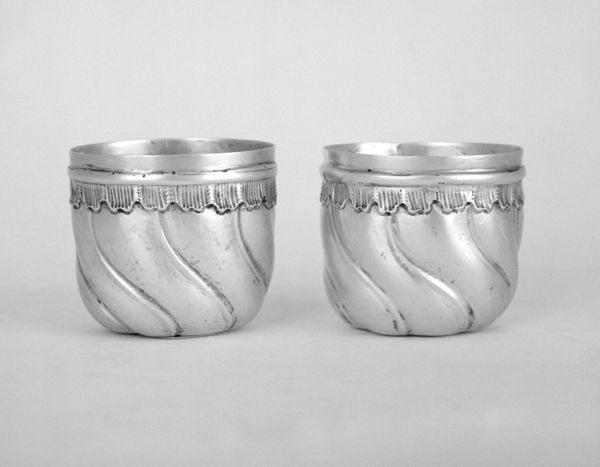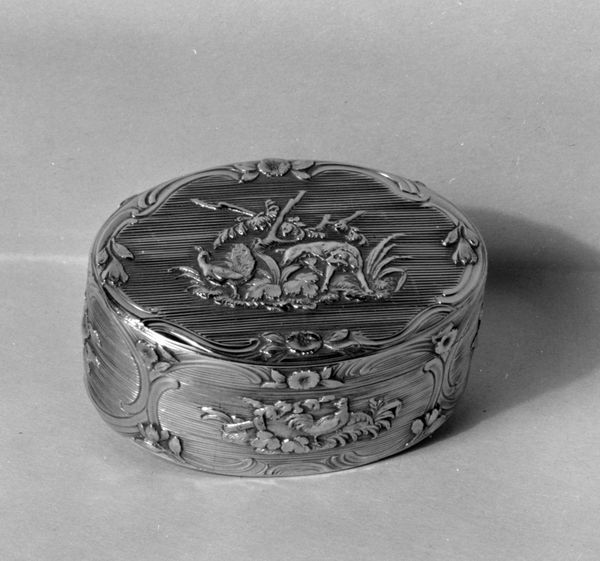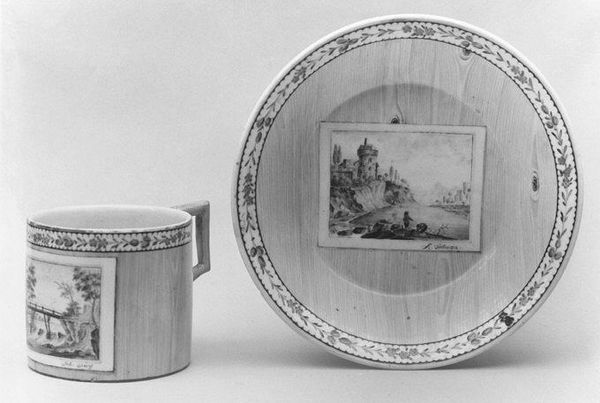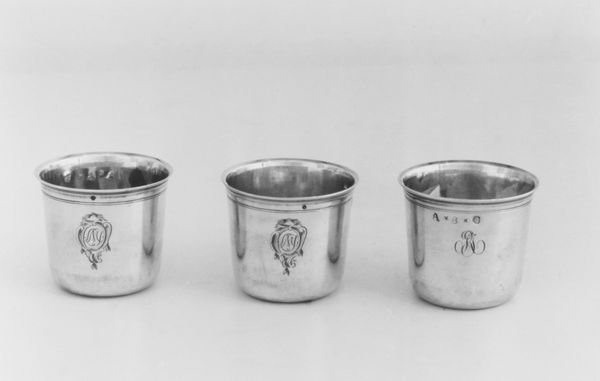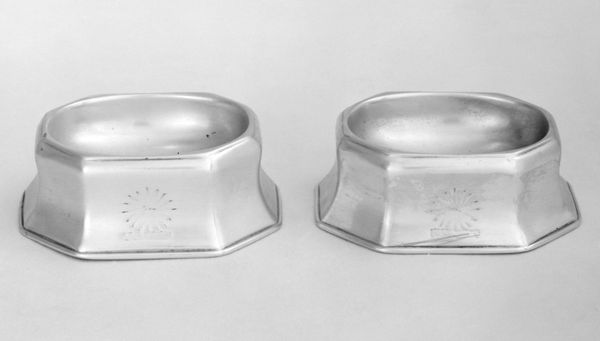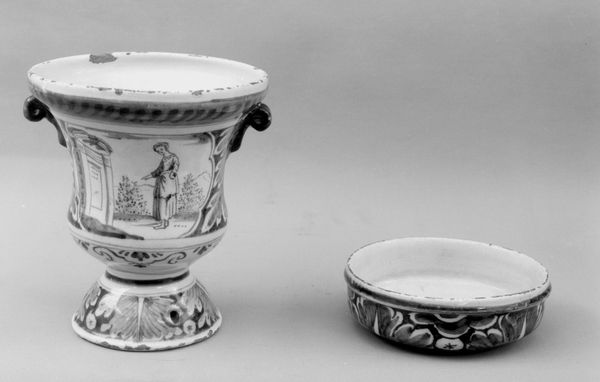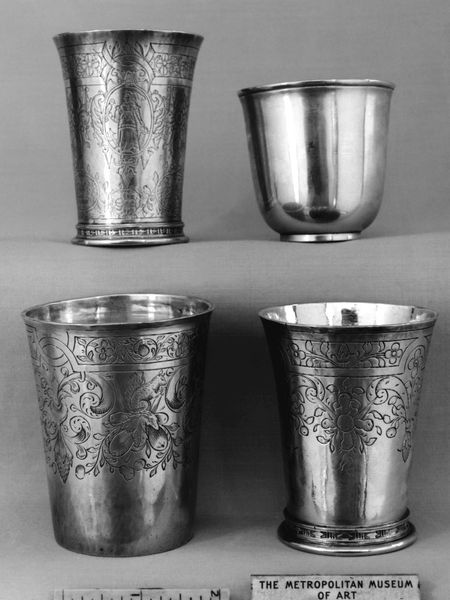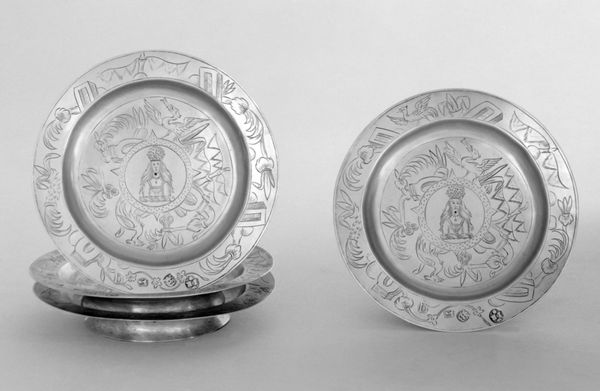
Cup (one of two) (part of a traveling tea service) 1783 - 1793
0:00
0:00
ceramic, porcelain, sculpture
#
ceramic
#
jewelry design
#
porcelain
#
stoneware
#
sculpture
#
decorative-art
Dimensions: Height: 2 7/16 in. (6.2 cm)
Copyright: Public Domain
Curator: Here we have a porcelain cup, one of two remaining from what was originally a traveling tea service. It was produced between 1783 and 1793 by Dihl et Guérard. Editor: Immediately striking, isn't it? A deceptively simple, clean form. But the stylized floral "B" elevates it. There’s an almost austere refinement—perhaps suggesting restrained intimacy. Curator: Indeed. The intertwined border pattern resonates deeply; consider the continuous nature, the unbreakable links suggesting connection and fidelity—appropriate for a private tea service carried perhaps across countries? The monogram itself speaks of personal identity being carried on the go. Editor: Precisely! Tea ceremonies themselves are about connection, conversation and intimacy; a traveling set implies those social rituals extended beyond the home, possibly diplomacy. The form allows it to travel but to communicate "prestige" and personal legacy wherever one goes. It's interesting what status symbols people carried with them on long voyages. Curator: Furthermore, the floral "B" above adds a delicate softness to the relatively rigid geometry. Flowers traditionally have represented ephemerality and beauty in various cultures. When combined with the monogram "B," it suggests beauty intrinsically tied to someone's identity or lineage—what meaning does it create beyond status? Editor: True, these cups tell a silent tale of cultural meaning. Everyday rituals are how we create communal identity, that act of partaking tea binds us. Curator: These two surviving cups give form to memory and identity on the move. Editor: Yes, they provide a snapshot of the global connections forged across countries via the simple act of sharing tea.
Comments
No comments
Be the first to comment and join the conversation on the ultimate creative platform.
